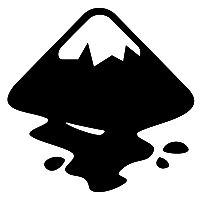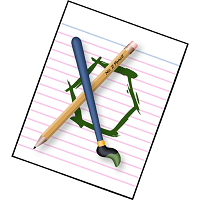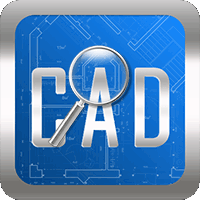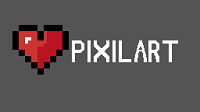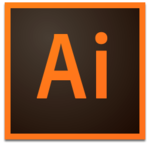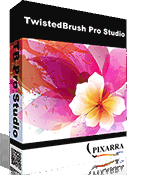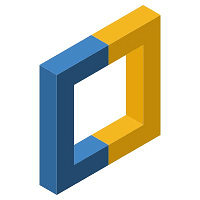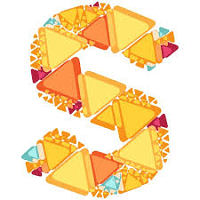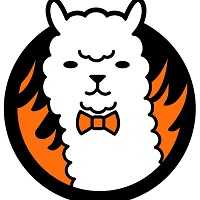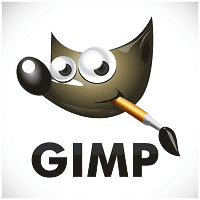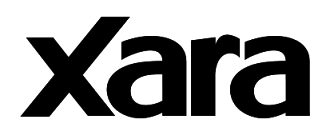What Is Drawing Tools?
Whether you are a novice or an experienced artist, drawing tools are vital tools for all artists. These resources are essential for honing your abilities and methods in addition to helping you realize your ideas. We will explore the world of sketching tools in this buyer's guide and provide you all the knowledge you need to make an informed choice.
Fundamentally, the term "drawing tools" refers to a range of instruments and supplies used in the production of sketches, illustrations, and other types of artwork. These instruments include digital tools like graphic tablets and software applications as well as more conventional ones like paint, pencils, and charcoal. They have many forms, sizes, and shapes, and each has special qualities and talents.
Let's start by looking at the conventional drawing tools. One of the most widely used sketching instruments is the pencil, which comes in a variety of grades from firm (H) to soft (B). Another well-liked media for producing dramatic effects is charcoal, which offers bold, rich lines. Markers, pens, crayons, and pastels are additional conventional instruments that support various drawing styles and methods.
However, because of their simplicity and adaptability, digital drawing tools have become more and more popular in recent years. With a stylus, graphic tablets also referred to as drawing tablets allow users to draw directly on a screen, simulating the feeling of sketching on paper. Additionally, these tablets have pressure sensitivity, which enables more accurate and thorough drawings.
Additionally, there are a number of software applications that offer a vast array of tools and functions for digital drawing, like Adobe Photoshop and Procreate. It is crucial to take into account aspects like your budget, skill level, and preferred media when buying drawing supplies. A simple set of conventional drawing supplies, such pencils, erasers, and a sketchbook, might be a nice place for beginners to start.
You can upgrade to more sophisticated tools and materials as you develop and try out various styles and techniques. Purchasing a graphic tablet and software can greatly improve the experience of digital artists. The quality of the materials must be taken into account in addition to the kind of tools.
Although less expensive solutions could seem more alluring, they might not offer the same degree of durability and quality as more expensive ones. Purchasing high-quality tools is always worthwhile because they have a big influence on how your artwork turns out.
What Are The Recent Trends In Drawing Tools?
The drawing tool industry is always changing as new tools and methods are developed to assist designers and artists in producing their works of art. Both traditional and digital artists have taken notice of a number of significant developments in the field of drawing tools in recent years. Let's examine the latest developments in drawing tools in more detail, from improvements in conventional tools to the emergence of digital drawing.
1. 3D Printing Pens: It should come as no surprise that 3D printing pens have become a prominent trend in the drawing tool industry given the growing popularity of 3D printing. These pens enable artists to realize their ideas in a completely new perspective by producing three-dimensional drawings using heated plastic filaments.
2. Digital Drawing Tablets: A new era of drawing tablets has been ushered in by technological breakthroughs. Digital artists can sketch more accurately and naturally with these tablets' pressure-sensitive screens, configurable interfaces, and sophisticated styluses.
3. Watercolor Brush Pens: These pens have revolutionized the field for conventional artists. These pens are a popular option for quick and simple drawing and painting since they mix the ease of use of a marker with the lovely watercolor effects.
4. Procreate App: Because of its robust capabilities and intuitive UI, the Procreate app for iPad has developed a cult following among digital artists. Many professional digital artists now use it because of its extensive array of customized digital brushes, layers, and sophisticated tools.
5. Retro Nostalgia: Traditional sketching instruments including bamboo pens, calligraphy brushes, and dip pens have become more and more popular in recent years. In a world where digital art predominates, this movement is motivated by a desire for art that seems more distinctive and authentic.
6. Small And Portable equipment: As on-the-go art has grown in popularity, so too have small and portable drawing equipment. These instruments, which range from miniature sketchbooks to travel-sized watercolor palettes, are designed for artists who wish to produce work at any time and from any location.
7. Sustainability: There has been a movement for eco-friendly drawing equipment as people's awareness of the environment has grown. Artists are adopting ecological options for their art-making process, such as biodegradable pens and sketchbooks made of recycled paper. There are now many alternatives available to artists of different skill levels and media thanks to recent developments in drawing tools.
Benefits Of Using Drawing Tools
For artists, designers, and enthusiasts who wish to realize their creative visions, drawing tools are indispensable. Numerous advantages provided by these tools can improve drawing as a whole and assist users in producing work of a high caliber.
1. Accuracy And Precision: The accuracy and precision of drawing tools is one of their main advantages. Your drawings will appear more polished and sophisticated if you use tools like protractors, compasses, and rulers to make straight lines, flawless circles, and accurate angles.
2. Versatility: There are many different types of drawing tools, including pencils, pens, markers, and brushes, which provide a multitude of artistic possibilities. They can be used to produce various line weights, textures, and effects, adding a distinctive and customized touch to your designs.
3. Time-Saving: Time is of the essence in the fast-paced world of today. Drawing tools enable you to swiftly and easily construct complex designs, which can save you time. You can make intricate patterns and designs in a fraction of the time it would take to do it by hand by using stencils, templates, and other tools.
4. Professional Results: Using drawing tools can improve the caliber of your work, regardless of your level of experience. With the use of these tools, you may produce drawings that stand out from the crowd by achieving precise proportions, clean and uniform lines, and compositions that seem professional.
5. User-Friendly: The purpose of drawing tools is to make the activity easier and more pleasurable. You may quickly learn how to utilize them and get amazing results, even if you're a novice. They are also appropriate for people with physical disabilities, enabling them to freely express their creativity.
6. Broad Variety Of Media: Traditional media like paper and canvas are not the only ones that drawing tools may be used on. Thanks to technological developments, artists today have access to digital drawing tools like tablets and software that open up a whole new world of possibilities. With the help of these tools, users may easily produce digital art and experiment with various styles and techniques.
7. Cost-Effective: Although purchasing a high-quality set of drawing tools could first seem like an extra price, they may end up being more affordable over time. These tools can endure for years with the right upkeep, saving you money by reducing the need for frequent replacements.
Important Factors To Consider While Purchasing Drawing Tools?
To make sure you are investing in the best drawing equipment for your needs, there are a number of crucial variables to take into account before making your purchase. These considerations will assist you in selecting the ideal sketching instruments for your artistic endeavors, regardless of your level of experience.
1. Quality: Since it directly affects how your artwork turns out, the drawing tools' quality is quite important. Choose tools with precision and longevity that are constructed from high-quality materials. In the short term, using low-quality tools could save you money, but they won't last long and might degrade the quality of your work.
2. Purpose: Consider your drawing equipment' intended use before you go shopping. Are you trying to find tools to draw, shade, or make intricate illustrations? It's crucial to select the right tools for the job because different drawing styles call for different equipment.
3. Skill Level: Another important consideration when buying drawing supplies is your degree of artistic experience. While more experienced artists might prefer to purchase separate tools that offer greater control and diversity, beginners might benefit from purchasing an all-in-one set of equipment.
4. Budget: Because drawing tools vary greatly in price, it's critical to establish your spending limit before you begin your buying. All ability levels can find reasonably priced solutions, but quality shouldn't be sacrificed. Find the best deal by researching and comparing costs.
5. Brand And Reviews: The brand is important when it comes to art equipment. High-quality instruments from well-known companies are frequently available, but their costs may be greater. You can also get a sense of the performance and durability of a specific brand or product by reading reviews written by other artists.
6. Tool Types: There are many different kinds of drawing tools accessible, and it can be difficult to choose the best ones. Pencils, pens, markers, erasers, paper, and drawing tablets are a few necessary supplies to think about. Think about what kinds of tools you already own and which ones you should get.
7. Ergonomics: Considering the ergonomics of your equipment is crucial because drawing may be a physically taxing hobby. If you intend to use the tools for extended periods of time, look for ones with comfortable grips and take into account their size and weight.
8. Personal Preference: In the end, you should also take into account your comfort level with the tools and your personal preferences. While some artists might like the ease and adaptability of digital tools, others might prefer the tactile feel of more conventional instruments like pencils and paper. Try a variety of kinds to see one suits you the best.
What Are The Key Features To Look For In Drawing Tools?
When purchasing drawing supplies, it's critical to take into account not only your personal preferences and requirements but also the essential characteristics that guarantee a productive and high-quality drawing experience. The following are essential characteristics to search for in sketching tools, regardless of your level of experience:
1. Material Quality: A drawing tool's overall quality and functionality are greatly influenced by the materials used in its production. Choose tools composed of high-quality materials, such as robust metals, long-lasting plastics, and brushes with strong, silky bristles.
2. Versatility: Any artist's toolkit would benefit from drawing instruments that provide a variety of applications and methods. Seek out multipurpose instruments that can be utilized for a variety of drawing approaches, such as paintbrushes with different bristle textures or pencils with different lead hardness.
3. Comfort And Ergonomics: The quality of your work can be greatly improved by using drawing instruments that are comfortable to use for extended periods of time. To lessen hand strain and enhance your experience overall, look for tools with ergonomic designs, soft handles, and evenly distributed weight.
4. Accuracy And Control: Producing accurate and intricate artwork requires the capacity to control and manipulate your drawing instruments. To guarantee more control and accuracy in your work, look for tools with smooth, steady flow, adjustable pressure sensitivity, and fine tips.
5. Compatibility: Verify that the digital drawing tools you use work with the devices and software you use. For convenient use on many devices, look for tools with a USB connection and compatibility with a variety of programs.
6. Durability: Since drawing supplies can be expensive, it's critical to select long-lasting and sturdy models. To be sure that your tools will endure frequent usage and last for a long time, look for ones that are constructed with durable materials.
7. Brand Reputation: It's crucial to take the brand's reputation into account when buying drawing supplies. To ensure that your purchase will be a wise investment, look for companies who have a solid reputation for creating dependable and high-quality drawing equipment. When buying drawing supplies, you may make an informed choice that will boost your creativity and make drawing more efficient and pleasurable by taking these important factors into account.
Why Do Businesses Need Drawing Tools?
Because they provide a multitude of advantages that can significantly boost productivity, creativity, and overall performance, drawing tools are crucial for companies of all sizes and sectors. There are many different drawing tools available, each with special features and benefits, ranging from conventional paper and pencil techniques to contemporary computer applications. Above all, sketching tools can significantly improve teamwork and communication in a company.
Drawing tools make it easier for team members to exchange and comprehend information, whether they are using them to sketch out plans and designs or create visual representations of ideas and concepts. Faster decision-making, fewer misunderstandings, and eventually a more efficient workflow can result from this. Additionally, the precision and general quality of work can be enhanced with the use of drawing tools.
Businesses can guarantee that their projects and goods fulfill the required requirements by having the ability to produce accurate and thorough drawings. For fields where accuracy and precision are essential, including architecture, engineering, and graphic design, this can be very helpful. Additionally, drawing tools are necessary for branding and marketing.
Businesses can use drawing tools to produce eye-catching and visually appealing visuals that can pull in and engage potential customers for everything from logo designs to packaging and advertising materials. Businesses may make a lasting impression on their target audience and stand out in a crowded market by doing this. Additionally, sketching tools provide firms with an affordable option.
Businesses of all sizes can now use drawing tools thanks to the proliferation of free and reasonably priced ones made possible by technological advancements. In the long run, this saves time and money by doing away with the need to outsource design work. Finally, businesses can use sketching tools as a source of creativity and inspiration.
Drawing is a creative process that can inspire fresh concepts and solutions, resulting in innovative and better goods and services. Businesses may benefit from this in terms of growth and success as well as a competitive advantage.
Which Industries Can Benefit The Most From Drawing Tools?
Many businesses that need hand-drawn technical drawings, sketches, and illustrations that are accurate and precise depend on drawing tools. These tools improve the final product's quality and professionalism in addition to being simple and convenient. Having the appropriate drawing tools can greatly improve the caliber and productivity of your work, regardless of your profession—professional artist, architect, engineer, or designer.
The following sectors stand to gain the most from the use of drawing tools:
1. Graphic Design: To produce illustrations, logos, and other visual components for ads, packaging, and site design, graphic designers utilize drawing instruments like pens, pencils, markers, and digital tablets. Their designs stand out and successfully convey their message thanks to these technologies, which enable them to meticulously and precisely realize their imaginative ideas.
2. Architecture: To produce precise plans and designs for buildings, bridges, and other structures, architects mostly rely on drawing tools. They can produce precise and in-depth designs that are necessary for the building process by using drawing instruments including drafting pencils, compasses, and rulers.
3. Fashion Design: Fashion designers sketch their concepts and designs for apparel, accessories, and shoes using sketching tools. Before making an actual garment, these technologies enable them to test out various styles, shapes, and sizes and make their creations a reality. Additionally, drawing tools aid in conveying their vision to pattern makers and producers.
4. Industrial Design: Industrial designers produce intricate technical drawings that show the manufacturing process of a product using drawing tools. These drawings aid in the production process and operate as a reference for engineers and manufacturers, guaranteeing that the finished product satisfies the required standards and specifications.
5. Animation And Film: Storyboards, character designs, and backdrops for animations and films are all made with the use of drawing tools, which are essential for animators and filmmakers. With the help of these resources, they may realize their concepts and give their work a unique flair.
6. Education: Drawing instruments are frequently utilized in classrooms, especially in courses on art and design. These resources foster creativity and self-expression while assisting students in honing their drawing abilities and methods.
Conclusion
It's clear from studying and evaluating different drawing tools that there isn't a single ideal tool for all artists. Every artist has different demands, tastes, and styles when it comes to painting. When selecting the best drawing tool, there are a few important things to take into account. First and first, you need to decide what kind of drawing you want to do. A fine point pen or pencil would be perfect if you're seeking for a tool to do accurate, detailed drawings.
Charcoal or markers might be a better option for drawings that are bolder and more emotive. Next, think about the media you intend to use. A range of pencils with varying degrees of hardness and erasers might be crucial if you prefer more conventional medium, such paper and pencil. A tablet with a stylus would be an excellent purchase for digital artists. The price is still another crucial consideration.
Some drawing tools are more affordable, but others might be quite costly. Finding a balance between price and quality that works for your budget is crucial. Furthermore, it's important to consider the drawing tool's quality. Purchasing high-quality instruments may be more expensive initially, but they will last longer and yield superior outcomes over time.
Finally, don't forget to take the drawing tool's ergonomics into account. It should be easy to manipulate and control, and it should feel good in your hand. In summary, selecting the appropriate drawing instrument is a subjective and unique choice. To discover the ideal equipment that will help realize your creative vision, take into account your tastes, needs, and financial constraints. You can unleash your imagination and elevate your artwork with the correct drawing tool. Have fun with your drawings!


